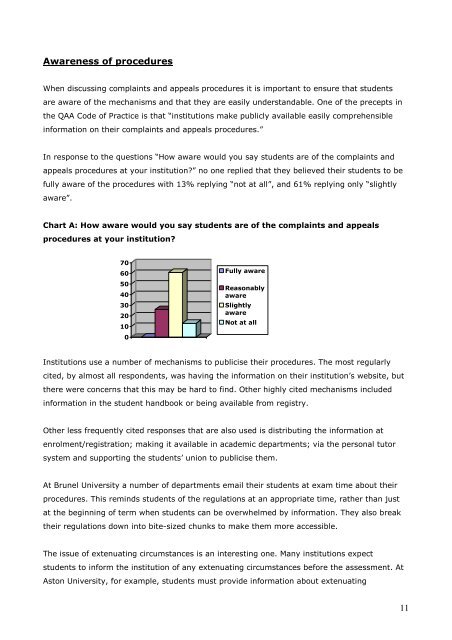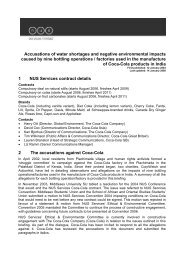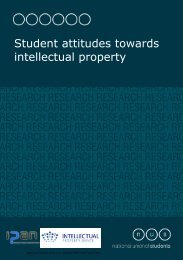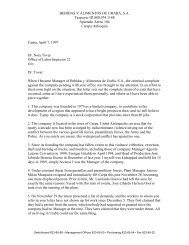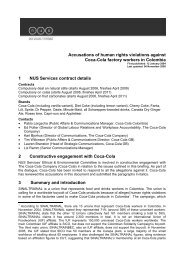Review of Institutional Complaints and Appeals Procedures in ...
Review of Institutional Complaints and Appeals Procedures in ...
Review of Institutional Complaints and Appeals Procedures in ...
Create successful ePaper yourself
Turn your PDF publications into a flip-book with our unique Google optimized e-Paper software.
Awareness <strong>of</strong> procedures<br />
When discuss<strong>in</strong>g compla<strong>in</strong>ts <strong>and</strong> appeals procedures it is important to ensure that students<br />
are aware <strong>of</strong> the mechanisms <strong>and</strong> that they are easily underst<strong>and</strong>able. One <strong>of</strong> the precepts <strong>in</strong><br />
the QAA Code <strong>of</strong> Practice is that “<strong>in</strong>stitutions make publicly available easily comprehensible<br />
<strong>in</strong>formation on their compla<strong>in</strong>ts <strong>and</strong> appeals procedures.”<br />
In response to the questions “How aware would you say students are <strong>of</strong> the compla<strong>in</strong>ts <strong>and</strong><br />
appeals procedures at your <strong>in</strong>stitution?” no one replied that they believed their students to be<br />
fully aware <strong>of</strong> the procedures with 13% reply<strong>in</strong>g “not at all”, <strong>and</strong> 61% reply<strong>in</strong>g only “slightly<br />
aware”.<br />
Chart A: How aware would you say students are <strong>of</strong> the compla<strong>in</strong>ts <strong>and</strong> appeals<br />
procedures at your <strong>in</strong>stitution?<br />
70<br />
60<br />
50<br />
40<br />
30<br />
20<br />
10<br />
0<br />
Fully aware<br />
Reasonably<br />
aware<br />
Slightly<br />
aware<br />
Not at all<br />
Institutions use a number <strong>of</strong> mechanisms to publicise their procedures. The most regularly<br />
cited, by almost all respondents, was hav<strong>in</strong>g the <strong>in</strong>formation on their <strong>in</strong>stitution’s website, but<br />
there were concerns that this may be hard to f<strong>in</strong>d. Other highly cited mechanisms <strong>in</strong>cluded<br />
<strong>in</strong>formation <strong>in</strong> the student h<strong>and</strong>book or be<strong>in</strong>g available from registry.<br />
Other less frequently cited responses that are also used is distribut<strong>in</strong>g the <strong>in</strong>formation at<br />
enrolment/registration; mak<strong>in</strong>g it available <strong>in</strong> academic departments; via the personal tutor<br />
system <strong>and</strong> support<strong>in</strong>g the students’ union to publicise them.<br />
At Brunel University a number <strong>of</strong> departments email their students at exam time about their<br />
procedures. This rem<strong>in</strong>ds students <strong>of</strong> the regulations at an appropriate time, rather than just<br />
at the beg<strong>in</strong>n<strong>in</strong>g <strong>of</strong> term when students can be overwhelmed by <strong>in</strong>formation. They also break<br />
their regulations down <strong>in</strong>to bite-sized chunks to make them more accessible.<br />
The issue <strong>of</strong> extenuat<strong>in</strong>g circumstances is an <strong>in</strong>terest<strong>in</strong>g one. Many <strong>in</strong>stitutions expect<br />
students to <strong>in</strong>form the <strong>in</strong>stitution <strong>of</strong> any extenuat<strong>in</strong>g circumstances before the assessment. At<br />
Aston University, for example, students must provide <strong>in</strong>formation about extenuat<strong>in</strong>g<br />
11


